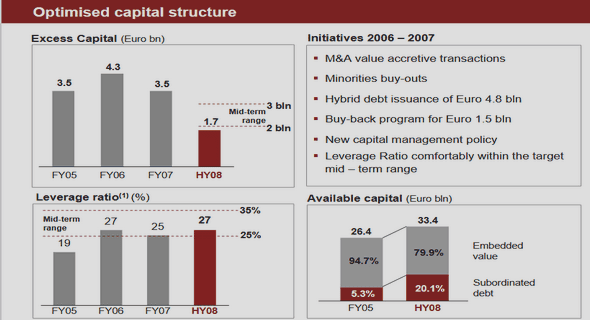(Downloads - 0)
For more info about our services contact : help@bestpfe.com
Table of contents
I Questions and methodology
1 Increasing stakes of the supply of environmental services
1.1 ES: private and social interests
1.1.1 Private and public goods
1.1.2 Production and externalities
1.1.3 Joint production: the core of the problem of ES undersupply
1.1.4 Environmental and ecosystem services
1.2 Private forestry: a typical multi-output process with externalities
1.2.1 Forest ecosystems produce wood and amenities
1.2.2 Varied production objectives of forest owners
1.3 Identification of the demand for environmental services
1.3.1 International environmental commitments and social needs
1.3.2 Forestry’s special place in environmental commitments
1.3.3 Public demand for forest environmental services in France
1.4 Supply of environmental services in private forests
1.4.1 Household producers
1.4.2 Survey of French forest owners’ expectations
1.4.3 Intentions to produce wood and non-wood services
1.5 Defining appropriate policies
1.5.1 Public environmental policies
1.5.2 Converting externalities into privately valuable products
2 Payment for environmental services in multi-output production processes
2.1 Possible costs of environmental services (ES)
2.1.1 Valuing ESs
2.1.2 The marginal costs: A technical estimate of ES value
2.2 Opportunity costs of ES provision: an analytical approach
2.2.1 Single ES transformation function
2.2.2 Double ES transformation function
2.2.3 Envelope of the maximum profit possibilities
2.2.4 Impact of the joint ES production on the opportunity cost of a single ES provision
2.3 Joint ES production and the maximum profit equation
2.3.1 Relationship between outputs is a key factor
2.3.2 When ESs have independent opportunity costs
2.3.3 When there is a synergy in ES provision
2.3.4 When ESs conflict
2.3.5 Characteristics of the profit function in the boundary of the ES set
2.4 Impact of PES designs on multiple ES provision
2.4.1 Underlying hypotheses
2.4.2 Payment for a single service
2.4.3 Bundling or stacking PES?
2.4.4 PES portfolio strategies
3 ES production possibilities and costs
3.1 Variation in the profit function with ES supply
3.1.1 From production possibility sets to profit functions
3.1.2 Particularities of ES provision by ecosystems
3.1.3 Determining the production possibility set using surveys
3.1.4 Modeling as a surrogate for surveys
3.2 PPS envelopment
3.2.1 Parametric modeling
3.2.2 Non-parametrical methods
3.3 Enveloping a non-convex production set with weakly disposable outputs
II Application to high oak forests
4 Estimating ecosystem production
4.1 Estimation of directly measurable outputs
4.1.1 Wood volume and stumpage value
4.1.2 Global change mitigation
4.2 Estimation of ES provision using indicators
4.2.1 A scenic beauty indicator to estimate the recreation function
4.2.2 Evaluating the contribution of a stand to biodiversity
4.3 Comparing production when rotation periods differ
4.3.1 Average profits and service provision
4.3.2 Discounted quantities
5 Modeling stand level profit possibilities
5.1 Modeling multipurpose high oak forest management
5.1.1 Forest management: an interaction between man and nature
5.1.2 Growth and yield simulation with Fagacées
5.1.3 Simulation of multipurpose forest management
5.2 Calculating the profit possibility frontier
5.2.1 Relations between management practices and outputs: exploring the PPS
5.2.2 Stability of the estimations using the model
5.3 Synergies and tradeoffs in the production of ecosystem services
5.3.1 Impossibility to define an optimum scenario for all outputs
5.3.2 Envelope of the multiple production set and tradeoff analysis
5.4 Sensitivity analysis
5.4.1 Increasing the discount rate shrinks the PPS
5.4.2 Suppressing the ES relative value variation factor increases the opportunity costs
5.4.3 Increasing fuel wood price would not alter the optimum decisions
5.4.4 Low site index forests more suitable for recreation
5.4.5 Limits of the simulation approach
5.5 Conclusion
6 Conclusions
6.1 Contribution to understanding multipurpose forest management
6.1.1 An original stand level multipurpose analysis
6.1.2 Integrated analysis of multipurpose forest management
6.1.3 Difficulties and solutions to estimate ES provision in the long run
6.2 Implications for decision makers
6.2.1 Preservation and restoration of environmental services: between markets and regulation
6.2.2 Recommendations
6.2.3 Payment as an incentive to forest owners for ES provision?
6.3 Extension of the modeling approach
6.3.1 Modeling the Production Possibility Set envelope at various stages
6.3.2 Production possibility sets and uncertainties
6.3.3 From the stand to the landscape scale
6.4 Conclusion
Appendix
A Forest Europe criteria and indicators
B Forest owner survey questionnaire
C R scripts
C.1 Script calculating the discounted value of services and gathering simulation results
C.2 Script to determine and display the envelope of the PPS
Glossary




